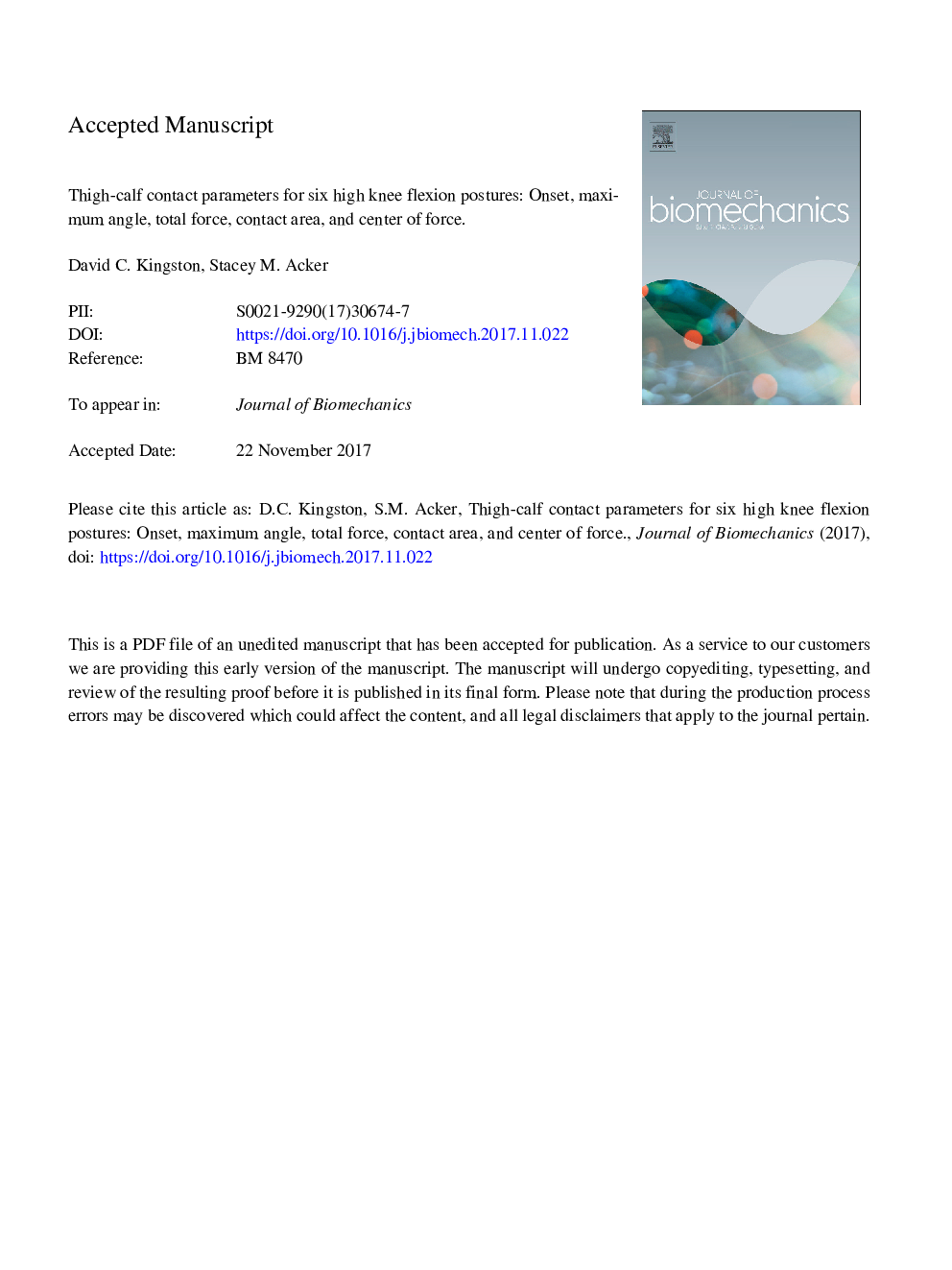| کد مقاله | کد نشریه | سال انتشار | مقاله انگلیسی | نسخه تمام متن |
|---|---|---|---|---|
| 7236717 | 1471097 | 2018 | 34 صفحه PDF | دانلود رایگان |
عنوان انگلیسی مقاله ISI
Thigh-calf contact parameters for six high knee flexion postures: Onset, maximum angle, total force, contact area, and center of force
ترجمه فارسی عنوان
پارامترهای تماس ران و گوساله برای شش پانچ فلکشن زانو بالا: شروع، حداکثر زاویه، نیروی کامل، منطقه تماس و مرکز نیرو
دانلود مقاله + سفارش ترجمه
دانلود مقاله ISI انگلیسی
رایگان برای ایرانیان
کلمات کلیدی
تماس با گربه زانو زدن، بستن فشار،
موضوعات مرتبط
مهندسی و علوم پایه
سایر رشته های مهندسی
مهندسی پزشکی
چکیده انگلیسی
In high knee flexion, contact between the posterior thigh and calf is expected to decrease forces on tibiofemoral contact surfaces, therefore, thigh-calf contact needs to be thoroughly characterized to model its effect. This study measured knee angles and intersegmental contact parameters in fifty-eight young healthy participants for six common high flexion postures using motion tracking and a pressure sensor attached to the right thigh. Additionally, we introduced and assessed the reliability of a method for reducing noise in pressure sensor output. Five repetitions of two squatting, two kneeling, and two unilateral kneeling movements were completed. Interactions of posture by sex occurred for thigh-calf and heel-gluteal center of force, and thigh-calf contact area. Center of force in thigh-calf regions was farther from the knee joint center in females, compared to males, during unilateral kneeling (82 and 67â¯mm respectively) with an inverted relationship in the heel-gluteal region (331 and 345â¯mm respectively), although caution is advised when generalizing these findings from a young, relatively fit sample to a population level. Contact area was larger in females when compared to males (mean of 155.61 and 137.33â¯cm2 across postures). A posture main effect was observed in contact force and sex main effects were present in onset and max angle. Males had earlier onset (121.0°) and lower max angle (147.4°) with onset and max angles having a range between movements of 8° and 3° respectively. There was a substantial total force difference of 139â¯N between the largest and smallest activity means. Force parameters measured in this study suggest that knee joint contact models need to incorporate activity-specific parameters when estimating loading.
ناشر
Database: Elsevier - ScienceDirect (ساینس دایرکت)
Journal: Journal of Biomechanics - Volume 67, 23 January 2018, Pages 46-54
Journal: Journal of Biomechanics - Volume 67, 23 January 2018, Pages 46-54
نویسندگان
David C. Kingston, Stacey M. Acker,
